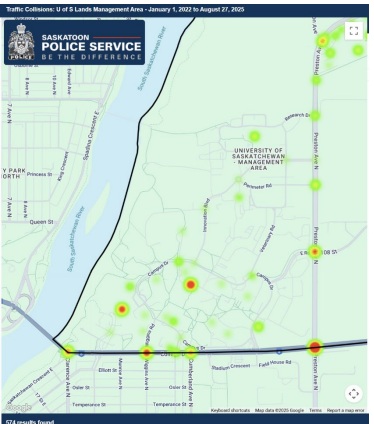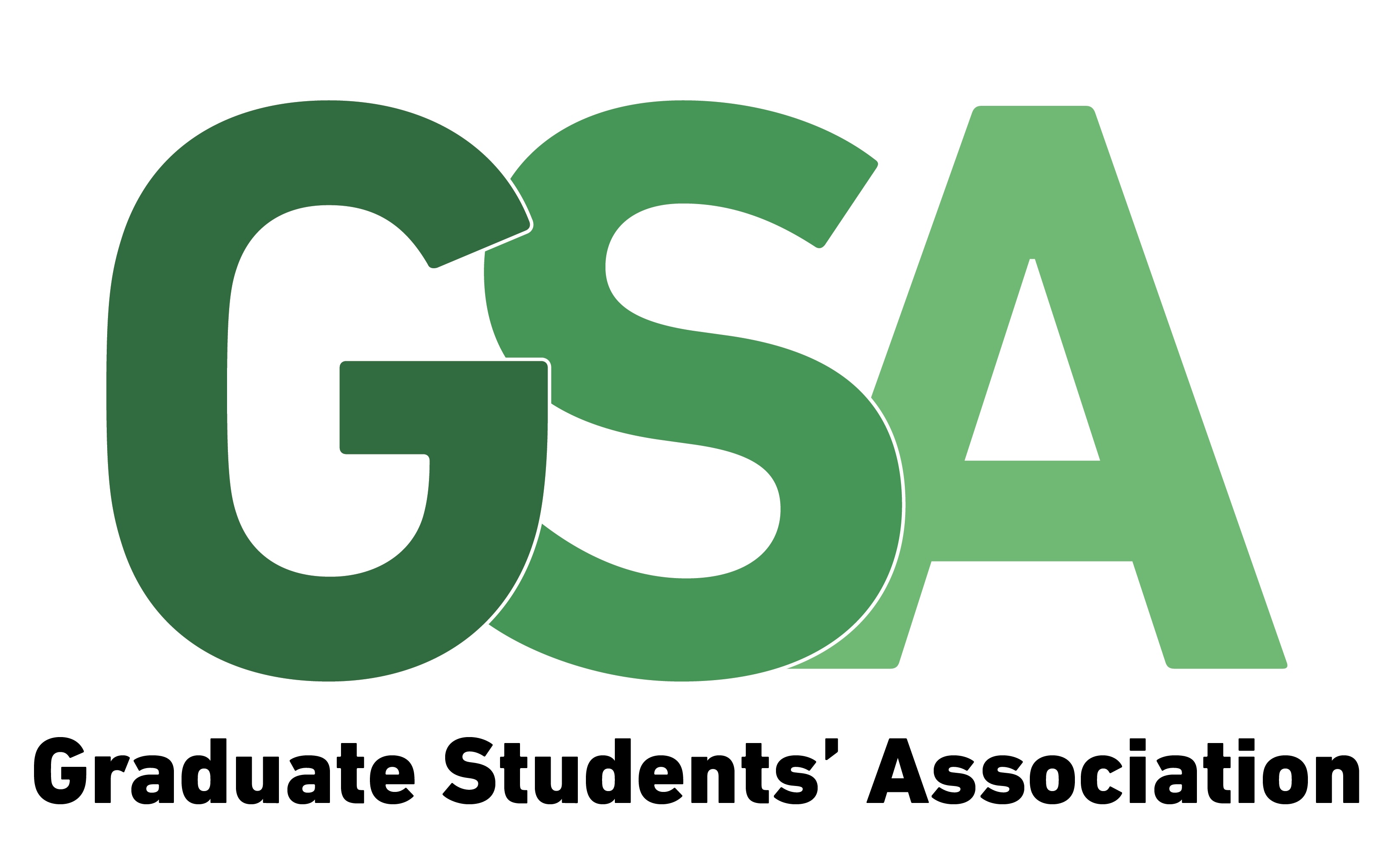
PEC September Agenda - Campus-adjacent roadways and student transportation safety
The areas on and around the University of Saskatchewan campus have experienced rapid growth in the past few years. During the same period, USask continues to focus on growing the student population, and has also partnered in efforts to bring Sask Poly to Innovation Place. However, students feel that the campus community is already negatively affected by on campus and campus-adjacent infrastructure insufficient to meet their needs and keep them safe. Though many of these challenges are outside of the President’s Executive Committee’s direct influence, GSA brings these concerns in hopes that the sphere of influence wielded by this group can push for solutions at the source, be that the City of Saskatoon or beyond.
Traffic flow
During peak travel hours during the academic year, College Drive and Preston Ave N are clearly overburdened. Between January 2022 and present, 574 vehicle collisions occurred in the “U of S Lands
Management Area.” Lack of correctly programmed left-hand arrows, too-short for the speed limit yellow light durations, and challenging winter driving conditions make the intersection at College and Preston
particularly dangerous. I was disheartened to see that the northern terminus of a recent “Preston Ave Corridor” traffic study was 14th Street – dismissing the most critical stretch of Preston Ave for campus access.
Construction
Numerous peer-reviewed research studies have shown that construction work zones are associated with a higher incidence of vehicular collisions. Extensive construction has been occurring both on and around campus for the past few years, and further construction associated with Sask Poly and development efforts on endowed lands ensure this trend will continue. Not only are traffic patterns altered during construction causing confusion and distraction for drivers, but construction is associated with increased frequency of large vehicles with poor pedestrian visibility, such as the cement truck which killed a cyclist on College Drive in 2023.
Safety for cyclists
Cycling is often touted as a great way to reach campus – eco-friendly, good exercise, no parking permit required, and no waiting for the next bus when yours is full. However, bicycle specific infrastructure is limited on and around the USask campus. No designated bike lanes exist on campus, forcing cyclists to choose between the sidewalk and the road. Few bike lanes or bike paths connect campus to the broader community, and no expansion plans currently exist for the general area. For those brave enough to cycle through Saskatoon winters, lack of timely snow removal creates even more dangerous conditions both from the roads themselves and from motorists who misjudge their stopping distance at intersections. Limited bike storage exists on campus, and storage is never accompanied by theft deterrents such as extra lighting or cameras.
Safety for pedestrians
Near campus intersections with significant pedestrian traffic (such as Cumberland and College) should be evaluated for different light timing or crossing approaches. Motorists turning left onto College from Cumberland are often impatient for pedestrians to cross, and during busy hours, pedestrians may be in the intersection for the entirety of the light change. Lack of a designated pedestrian-only light cycle or a pedestrian overpass puts students at risk at this and similar intersections (i.e., Wiggins and College). Furthermore, on much of campus, lighting is insufficient for safe foot or bike travel at night. I have personally had to use my cellphone as a flashlight after slipping and falling on ice I couldn’t see in the dim lighting.
Safety on public transit
Graduate students are more likely than undergraduate students to come early or stay late on campus, taking buses which are much quieter than during peak hours. Lack of parking infrastructure and lack of free parking in the evening forces many students to use public transportation even during extended working hours, and students have expressed concern about traveling alone on public transit late at night, particularly when other riders are acting erratically and are not removed by bus drivers.
In summary, if USask wants more students, more students have to get to campus somehow. Parking is extremely limited, buses are full during peak hours, and cycling is increasingly unsafe. GSA believes that for the safety of future students, changes on and around campus should be considered.
Thank you for considering our concerns.
Graduate Students’Association Executives
